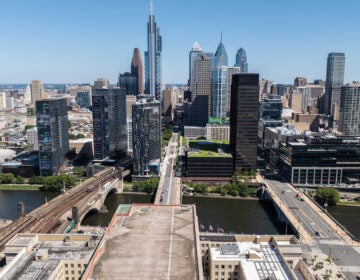Inquirer: Going modular to cut city construction costs
Inquirer: Going modular to cut city construction costs
Construction began on more homes in Philadelphia in 2004 than in any other year in the last three decades.
But even in the city’s best year for residential building, data compiled by Econsult Corp. of Philadelphia show, there were still 1,000 fewer units launched than were built in the four Pennsylvania suburban counties combined in their worst year during that same period, 1982.
The reason: It costs more to build the average house in the city than can be gotten in sale price when it comes to market. Only New York, San Francisco, and Chicago have higher construction costs.
In 2010, for example, it costs $128 a square foot to build a Philadelphia house, while sale prices average only $100 a square foot. The cost of construction in the city is $35 per square foot more than in the Pennsylvania suburbs, studies show.
The city’s 10-year tax abatement, enacted in the late 1990s, helped close the gap enough to create 13,000 new units in the last decade, but residential builders are interested in reducing construction costs beyond that.
One possible solution: modular, or factory-built, houses.
It is not a new concept. The National Association of Home Builders has been advocating greater use of modular housing for more than 20 years.
Westrum Development Co., at two of its communities – Hilltop at Falls Ridge in East Falls and the Arbours at Eagle Pointe in the Northeast – assembled modular units fabricated at Custom Building Systems L.L.C. in Middleburg, in central Pennsylvania.
Developer David Perlman, president of the Building Industry Association of Philadelphia, built 75 modular houses in the city during the recent real estate boom – primarily to keep up with demand.
“It was essential to do both modular and ‘stick-built’ [traditional construction] as a builder with a backlog of customers,” he said.
Stick-built houses take five to six months to build, Perlman said, while modular units can be completed in eight to 10 weeks. (Since the boom has fizzled, and he is “without the tremendous backlog,” Perlman is back to stick-built.)
Reducing construction-labor costs saved a “tremendous amount of money,” he said, “as much as you see on paper.”
The paper Perlman refers to is a study, “Going Mod: Reducing Housing Costs in Philadelphia with Modular Construction,” released last week by the Building Industry Association and the When We Fix-It Coalition of builders, architects, engineers, and environmental groups.
The study found that modular construction of a 16-foot-wide house in the city reduced square-foot costs by $32; for a 20-foot-wide house, the saving was $12 a square foot.
Among the study’s recommendations, according to its author, Karen Black of May 8 Consulting, is to build a modular-component factory closer to Philadelphia, to reduce transportation costs. (New York’s is at the Brooklyn Navy Yard.)
To build his small condo/townhouse project, the Flats at Girard Pointe, near Girard Avenue and Third Street in the Old Kensington neighborhood, developer Jeffrey Tubbs is using modular units.
As a first-time builder, Tubbs said, the units let him put 75 percent of the responsibility for construction on the modular-home manufacturer and “allowed me to have a construction site that one day had foundations and the next day had homes with windows and doors that could be locked.”
“That helped a ton with security and providing a great protection from any potential weather elements,” he said.
Modular units reduce labor costs 70 percent, said Mark Durkalec of the carpenters’ union – not an easy thing for the unionized building trades to deal with.
“Modular construction has advanced a lot over the last 10 years,” Durkalec said. “Obviously, as a union carpenter, I don’t like the idea of 70 percent of man-hours lost compared with stick-built, but you are going to see a lot more.”
Perlman credited the carpenters with helping to train crews over time that “were able to assemble these [modular] units with ease.”
Tubbs said union crews set up the “boxes” for his development in a deal worked out between the unions and modular companies.
“The union [subcontractors] that I had on the job worked with us as best they could,” he said. “Everyone is hungry for business.”
Alan Greenberger, acting deputy mayor for planning and economic development, cautioned, however, that modular construction, which comes with design limitations not found in traditional building, will not fit every situation.
“Building in the city comes with situations that are only solvable on site,” Greenberger said. “The market will tell you where modular works. You need to know how to take advantage of technology that can lower costs, but be able to create places where people want to live.”
Kevin Gillen, vice president of Econsult, said high construction costs had stifled the city’s growth. Philadelphia’s housing stock increased just 2 percent between 2000 and 2010, while the suburbs’ rose 9 percent and most cities added 10 percent.
In addition, Gillen said, the housing stock will be smaller, older, and more depreciated, and “low-income households will disproportionately bear” the burden of the higher costs, because they cannot afford better and have to live in substandard housing.
If Philadelphia’s construction costs fell to the Pennsylvania average of $105 a square foot from $128, or were in line with the national average of $102, “property taxes generated in Philadelphia would be more than they are now,” Gillen said.
“Not enough to help the budget, but 14.3 percent more.”
WHYY is your source for fact-based, in-depth journalism and information. As a nonprofit organization, we rely on financial support from readers like you. Please give today.



